The history of beach holidays in postcards
In the "golden age" of postcards, one of the favorite postcard motifs was resorts and resort life (however, even now "the life of sunbathers" often becomes the subject of postcards). But looking at postcards published 100 - 120 years ago, one cannot help but notice significant differences in how and in what people relaxed on the seashore.
Gentle summer sun, playful sea, soft southern sand – most modern people cannot imagine their vacation without these important components. Some go to the sea in search of unforgettable impressions, others simply need a chocolate tan, and others love to swim. Beach vacations have become a whole industry, with many of their own subtleties and secrets. Stylish swimsuits, special shoes for walking along the sandy shore, exquisite pareos, sunglasses, hats – modern consumers have access to a vast range of products, one way or another connected with summer vacations near a body of water.
It is hard to imagine that just a few centuries ago, bathing clothes were practically no different from everyday clothes, and most beaches were filled with so-called bathing machines. Let's try to follow how the standards of beach recreation changed, from century to century approaching the appearance of modern resorts.
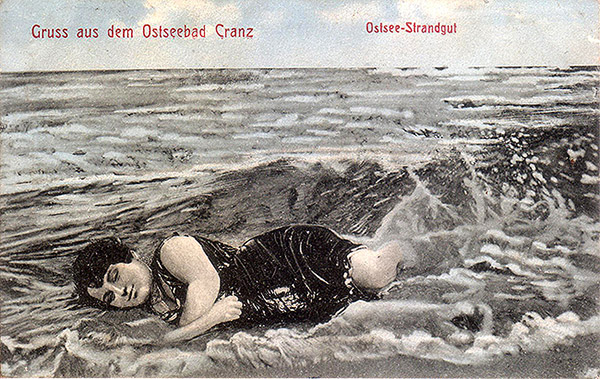
Resort life before the 20th century
In most European countries, respectable ladies did not swim or sunbathe. Such activities were considered indecent, suitable, at most, for poor peasant women. Wealthy families had their own bathing houses - it was in them that representatives of the upper classes took refuge from the heat and carried out hygienic procedures. During the time of Louis XIV, men and women escaped the heat by walking along the coastline. At the same time, they remained in traditional multi-layered outfits and high-heeled shoes. After some time, Napoleon III's wife, Eugenia Montijo, introduced the fashion for relaxing under an umbrella: "sunbathers" put on slightly less voluminous clothes and sat in special beach chairs. Those who felt a strong desire to plunge into the water did so in the same outfits in which they came to the beach, or simply walked barefoot in the shallows. It is worth noting that court dresses were not very suitable for swimming and, naturally, caused vacationers a lot of inconvenience. And in general, up until the end of the 19th century, people bathed mainly not for pleasure, but exclusively for medical reasons. In particular, it was believed that sea bathing was useful for throat diseases. In addition, in some places, not only bathing, but even just being on the seashore was prohibited.
Bathing machines of the 18th - 19th centuries
The first decade of the 18th century is considered to be the beginning of the era of sea bathing. In Britain and its colonies, Germany, France and the USA, this period was marked by the appearance of the first bathing machines.
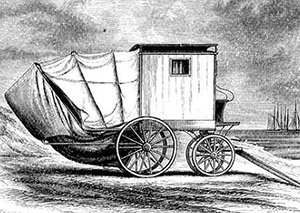
For a long time, it was believed that the first bathing machine appeared in 1750, and the primacy in its invention was attributed to a certain Benjamin Beale, a glove maker from Kent. But now it has been established that Beale only improved the bathing machine by constructing a fabric canopy at its back, which was called a "modesty hood." Bathing machines themselves appeared in England a couple of decades earlier.
So, bathing machines were small houses located on the seashore and hiding bathers from the eyes of passers-by. Such structures had canvas or wooden walls, as well as a sliding canopy. A person entered the bathing machine on the shore, without taking off his everyday clothes. Then the machine was transported to the sea - as a rule, horses were used for this. Having taken off her dress and put on a special suit, the lady - and bathing machines were used, for the most part, by representatives of the fair sex - went down a ladder from the bathing machine directly into the water and could swim calmly, without fear of being seen "in an indecent form."
Here is how the interior of a bathing machine from the middle of the century before last is described:
"The interior is painted in snow-white enamel. On one half of the room, holes are made in the floor to drain water from wet clothes. The other half of the small room is covered with a green Japanese rug. In one corner is a spacious green silk bag lined with rubber on the inside. A wet bathing suit is thrown into it. Large mirrors hang on the walls, under which are shelves filled with various toiletries. There are hooks for towels and a robe. In one corner there is a small square seat, the raised lid of which opens up a cabinet for storing clean towels, soap, perfume, etc. Decorations of white lace and green ribbons are hung everywhere."
Having finished the "water procedures", the bather returned to the car and raised the flag installed on its roof. This unique signal indicated that the vacationer was ready to return to the shore. Many representatives of the upper class were accompanied by assistants during bathing: they helped their mistresses change clothes and moved the bathing machine in the right direction. In addition, the assistants monitored the safety of the bathers and helped them out in the event of a sudden strong current.
Men also used bathing machines, although they could afford to appear on the seashore in a special swimming suit. If for women this was considered very indecent, then the requirements for the strong half of humanity were much less strict. Men and women were supposed to relax on the beach at different times and in different bathing machines. Clothes intended for swimming were long and opaque.
"Beach Baskets"
"Beach baskets" (German: Strandkorb ) are an essential attribute of the German coast of the North and Baltic Seas. They were invented by Wilhelm Bartelmann from Rostock in 1882 and were wicker chairs with a canopy. Initially, such a chair with a canopy was intended for one person, then Bartelmann began to produce two-seater versions. "Beach baskets" were supposed to protect vacationers from wind, sun and sand, as well as create the appearance of privacy and hide those sitting in it from prying eyes.
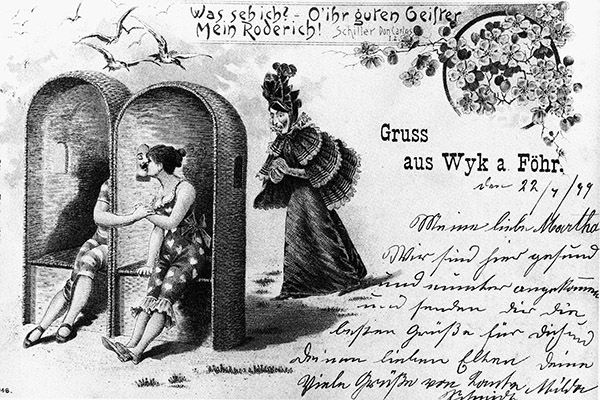
Almost immediately, the "beach baskets" became incredibly popular, and already in 1883 the first office for renting them to tourists appeared in Travemünde. Over time, the "beach baskets" conquered the entire world. In 2007, a multi-seat chair was created for the G8 meeting, in which the leaders of the participating states did not fail to pose for the lenses of photojournalists.
At the resort of Kranz (now Zelenogradsk), for example, beach baskets could be rented in 1941 starting from May 1. Priority was given to war invalids, military personnel on leave, mothers with many children and patients with a doctor's prescription (does this sound familiar?). Rental prices were fixed, but depended on the specific beach: on the eastern and central beaches, the daily rate was 1 Reichsmark for a two-person basket, while on the western beach the same basket could be rented for 80 pfennigs. Weekly rentals were 6 and 5 marks, respectively.
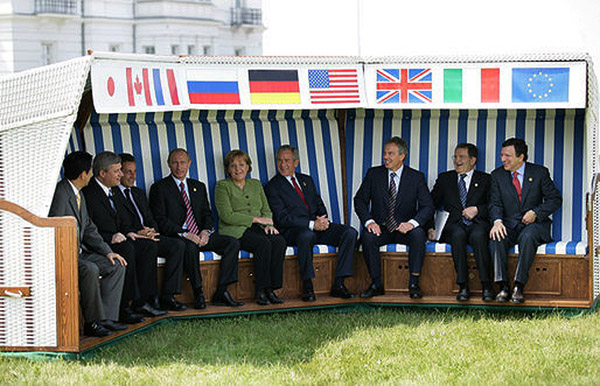
Bathing suits
If in the 18th century most women bathed naked, then by the beginning of the 19th century the first bathing suits came into use. They were simple dresses with long sleeves. The clothes covered almost the entire body, stockings were put on the legs, and a cap was put on the head. High boots with lacing were used as footwear. As a rule, bathing suits repeated the fashion trends of a certain time. Thus, wide skirts had the form of a fluffy crinoline. To prevent the fabric from floating, small weights were sewn to it.
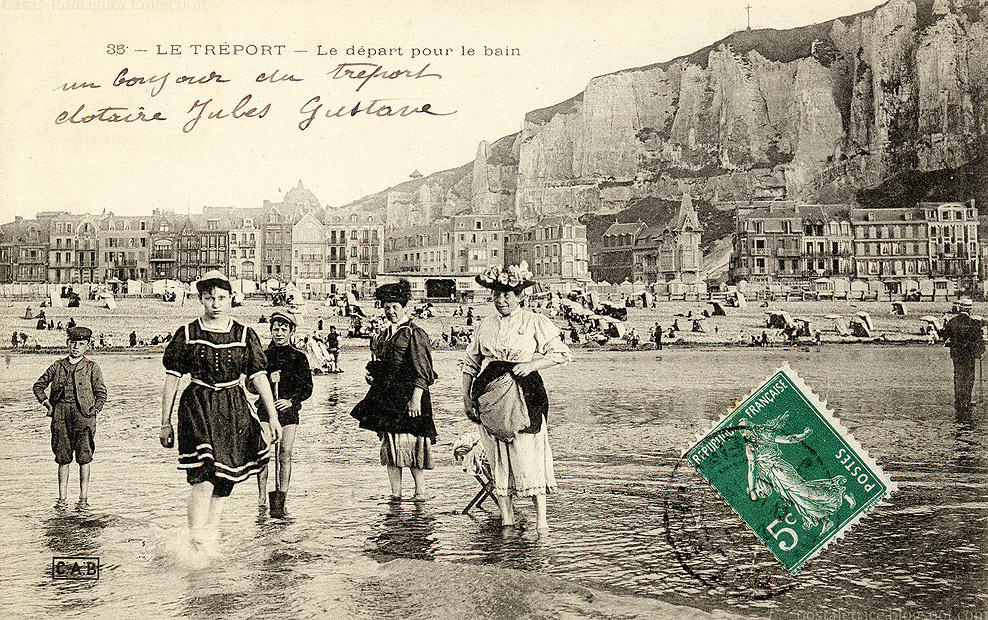
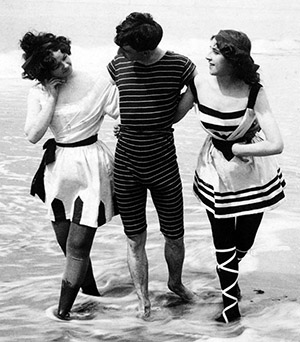
Later, more comfortable "Turkish" trousers began to appear, which were complemented by an elongated jacket. Such suits were made of thick flannel and became incredibly heavy when wet. Therefore, soon narrower trousers replaced long harem pants. They were used together with short woolen dresses, usually made in dark blue or black. Stockings were worn on the legs, and a beautiful wide-brimmed hat on the head. Special footwear was provided for swimming: these were thick woolen socks with thick soles. The tight-fitting swimsuits that are more familiar to us came into fashion only in the 1920s. They were made of thin knitwear and usually consisted of short trousers and a shirt.


Joint beaches and bikinis
The first joint beaches appeared in Britain in 1910. At the same time, people began to abandon the uncomfortable bathing machines. After the First World War, such structures disappeared almost everywhere. They were used only by the oldest European bathers, as well as by puritans in the United States. The first nudist beach appeared in 1925 in France. In the Soviet Union, a place of rest for nudists was organized in the Crimea, not far from Kazantip.
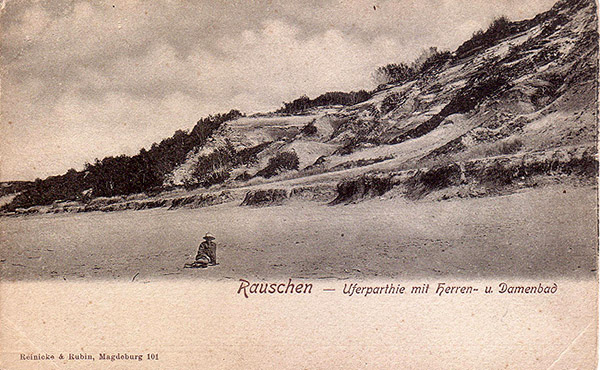
In Kranz, the gender division of beaches was even reflected in the street names. The city had Damenbadstrasse (Ladies' Beach Street, now Volodarsky Street) and Herrenbadstrasse (Men's Beach Street, now Krymskaya Street). There was even a street with the simple name Damenbadausgangstrasse, which can be translated as Exit Street from the Ladies' Beach (now 2nd Oktyabrsky Lane).
It is believed that the tanning fashion was introduced by Coco Chanel, who was supported by her close friend and beloved singer Marti Davelli. Gradually, centimeter by centimeter, beach suits became more and more "stingy", while meeting with serious censure from the public. Nevertheless, in 1946, the French fashion designer Louis Réard presented the first bikini swimsuits at his show (the name for the swimsuits was borrowed from the atoll in the Pacific Ocean, where the United States tested a nuclear bomb). The designer's collection made an indelible impression on both the public and the models themselves, who were to demonstrate the outfits. Nevertheless, open swimsuits have taken a strong position on the world's catwalks and the shelves of modern stores.
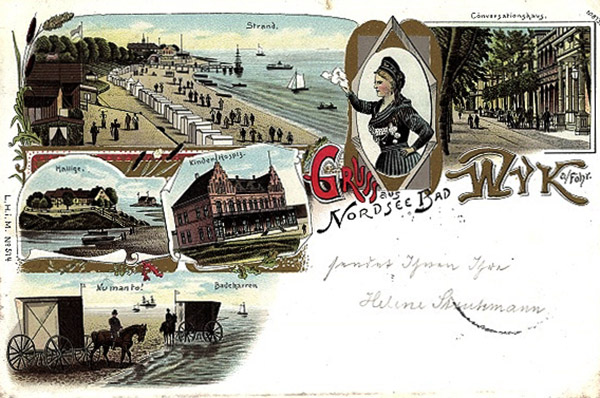
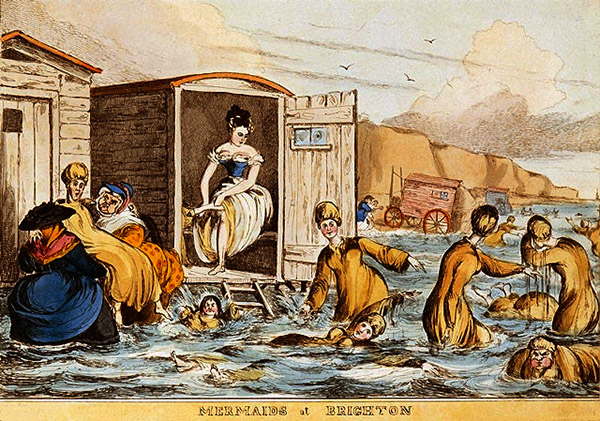
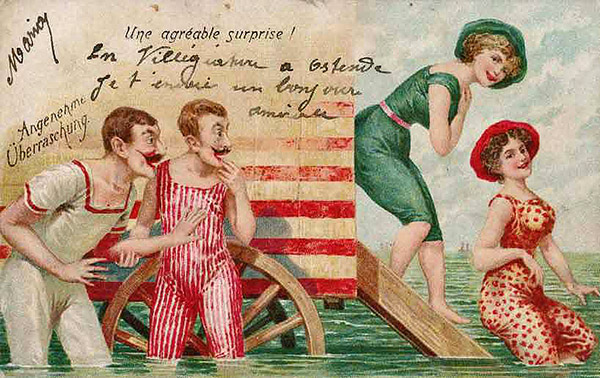
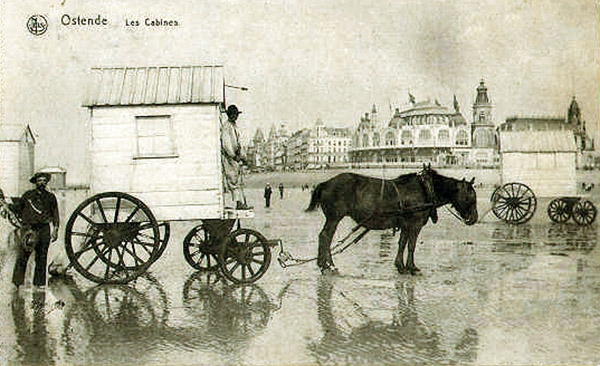
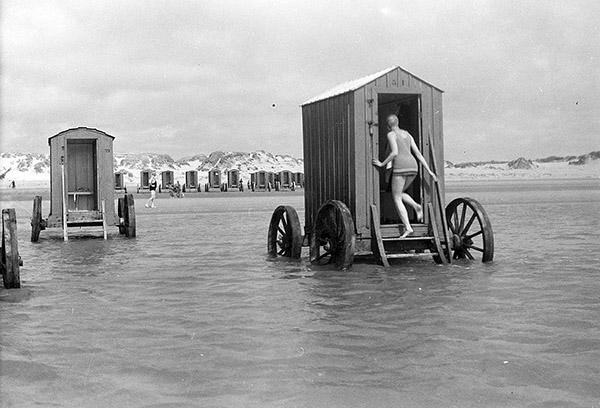
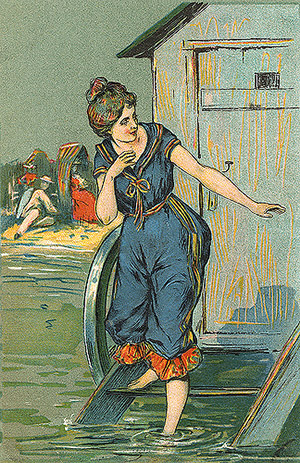
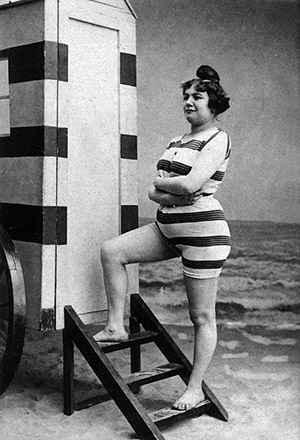
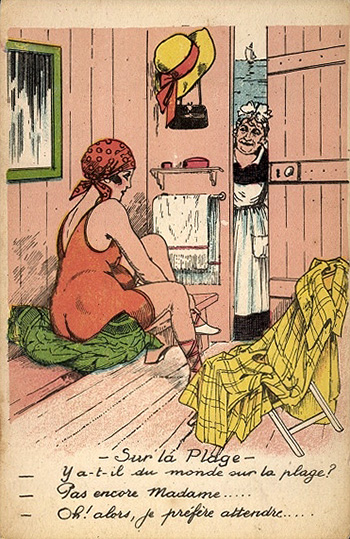
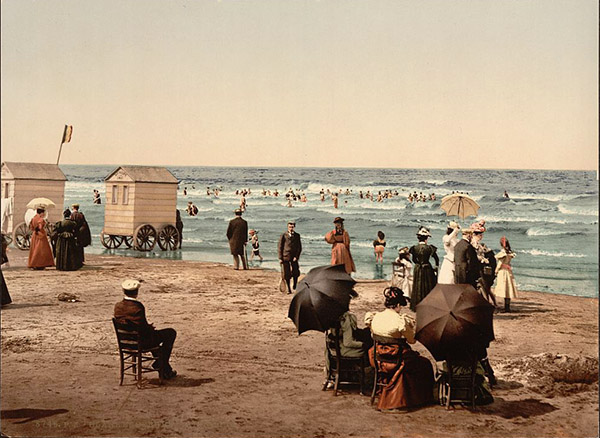

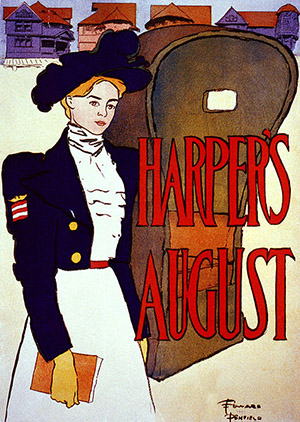
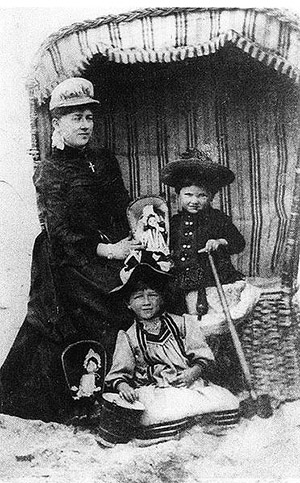
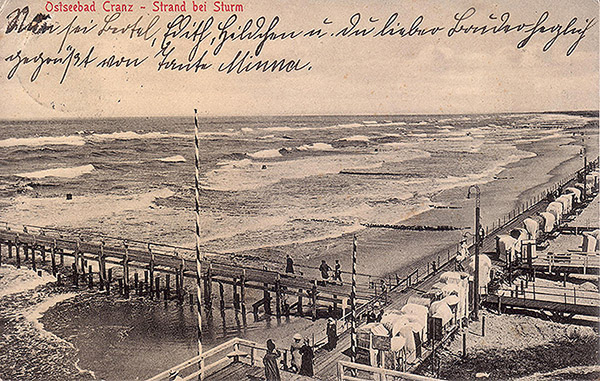
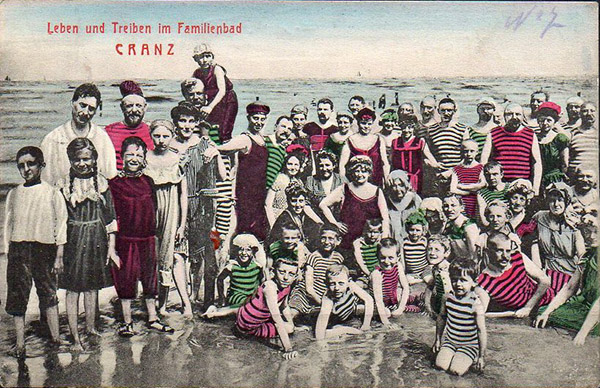
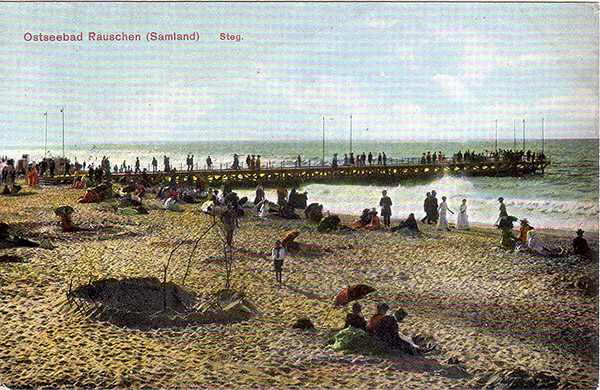
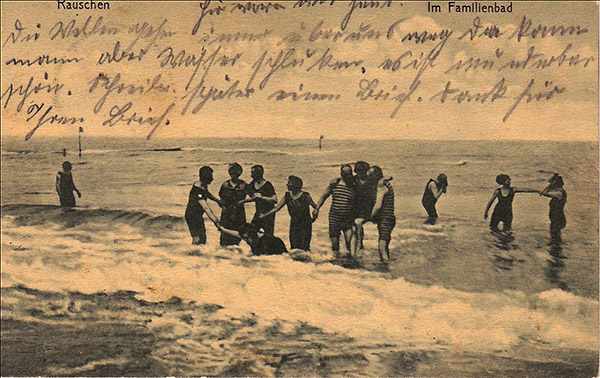
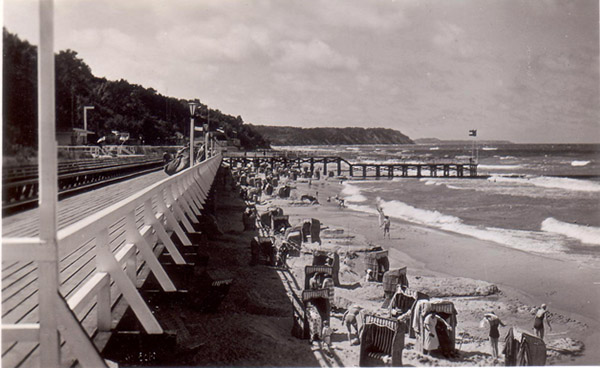
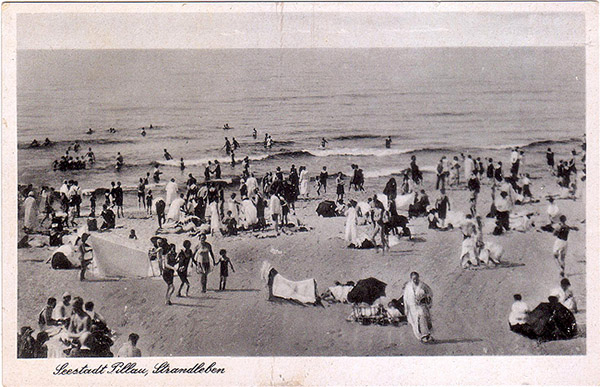
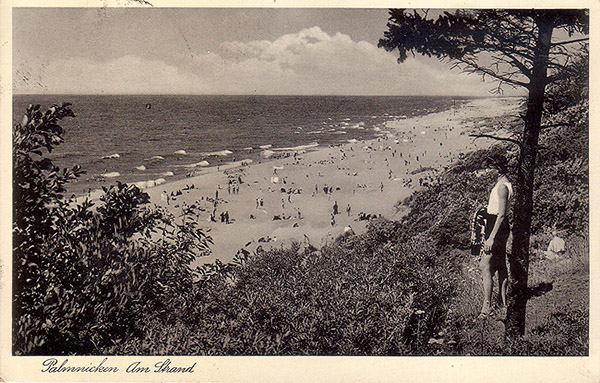
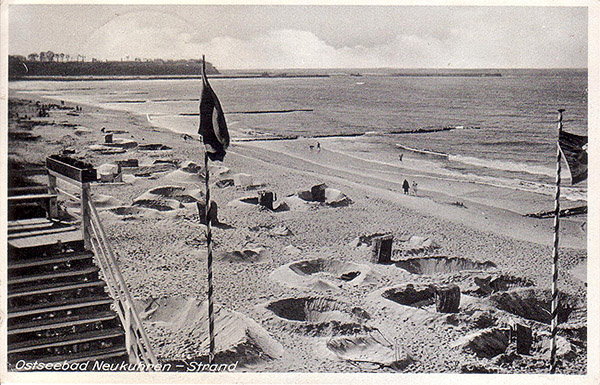
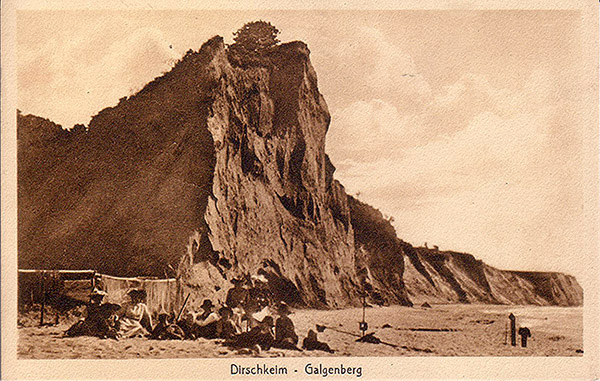
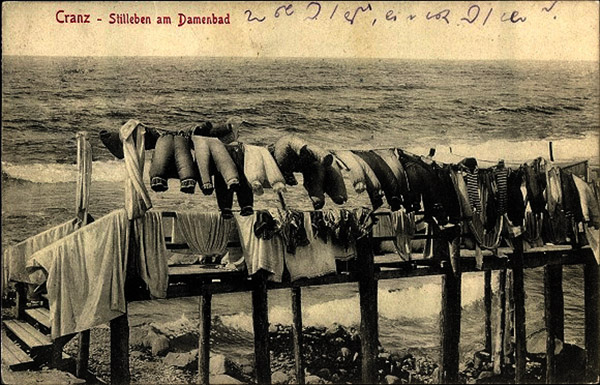
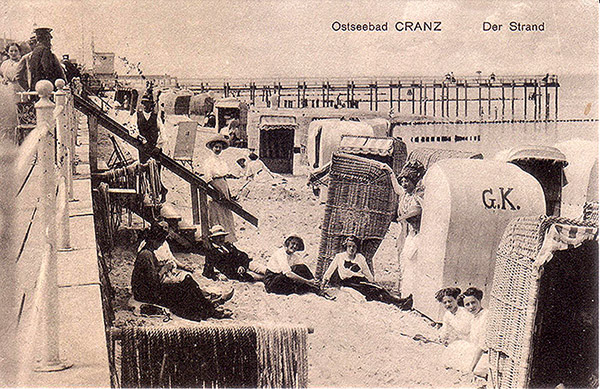
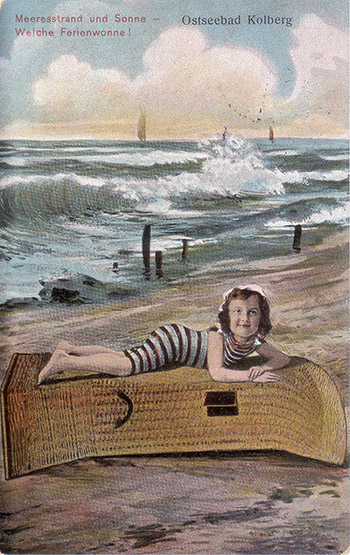
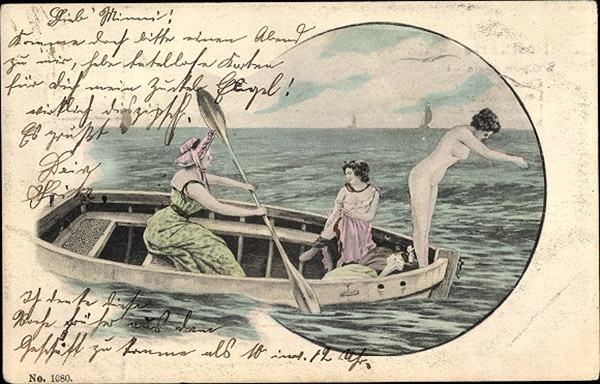
Peeping at bathers changing clothes on ladies' beaches became a fairly common subject for postcards at the beginning of the last century.
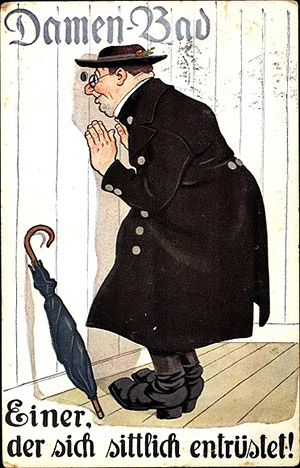
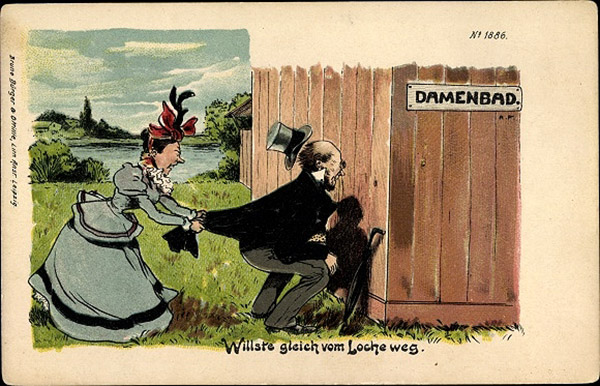
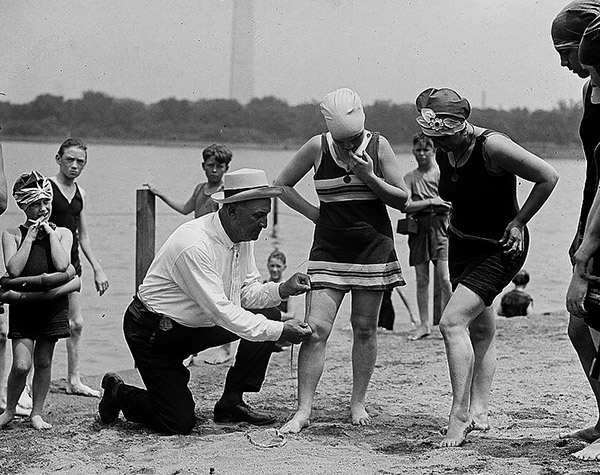
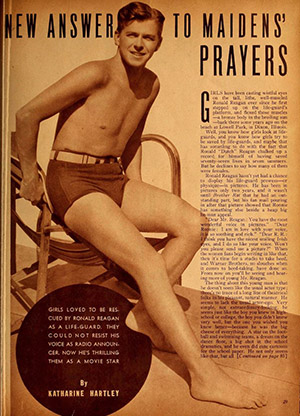
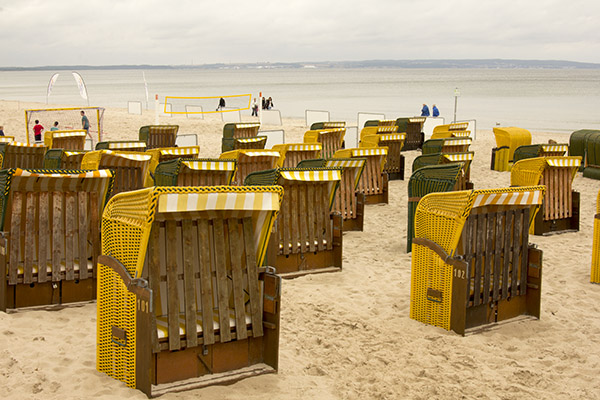
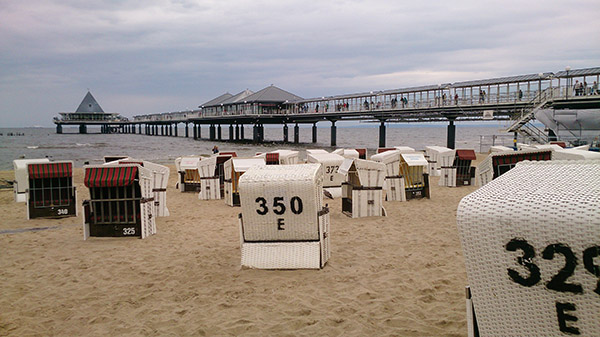
______________________
Based on materials from the websites:
Wikipedia
janeaustensworld.wordpress.com
www.victoriana.com
loveisspeed.blogspot.fr
www.slate.com/blogs/the_vault
